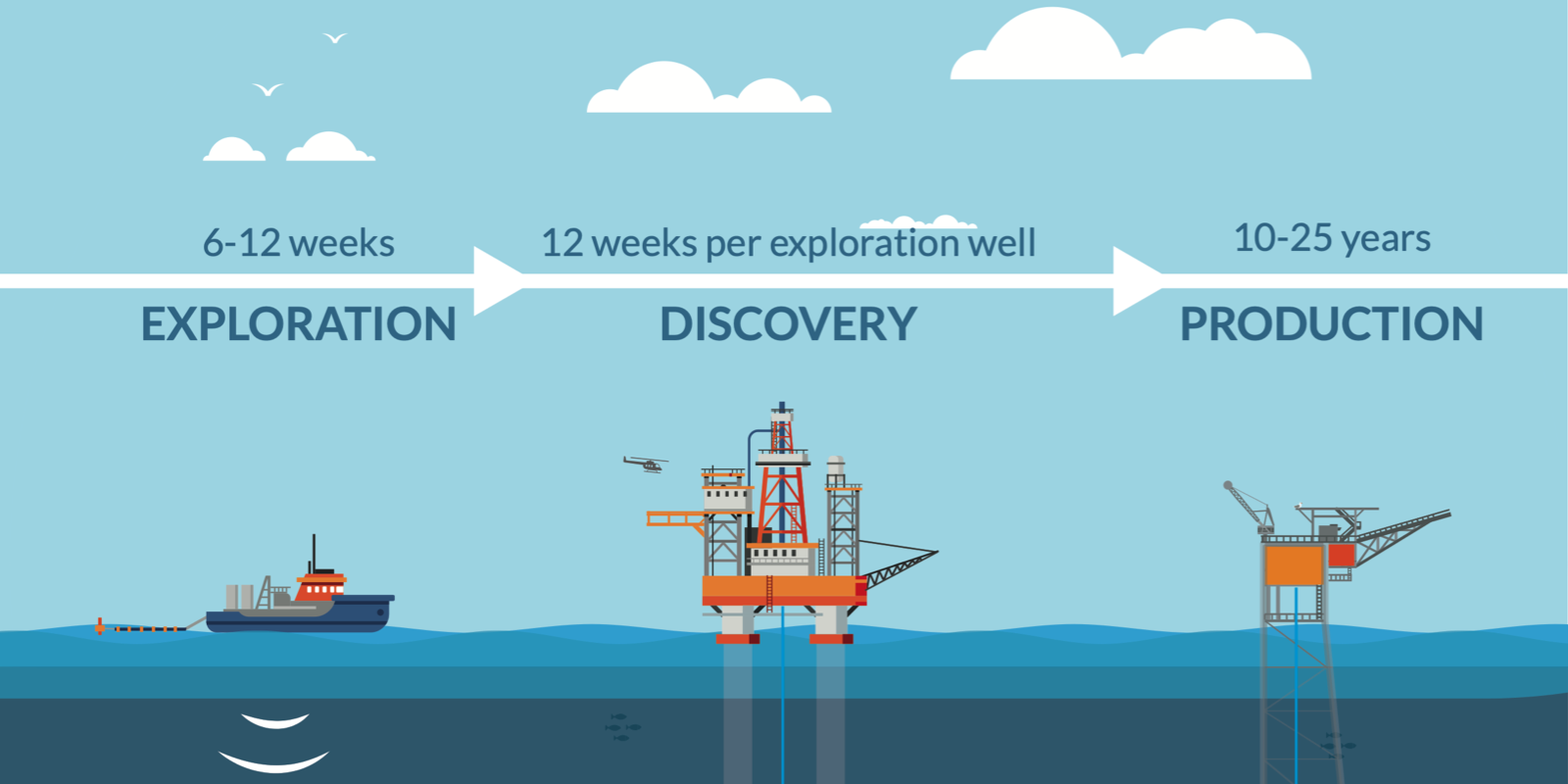
Exploration
A project starts with exploring the subsurface to see what is in it. Seismic research is carried out to map the underground situation. With the help of air pressure cylinders, vibrations are . introduced into the subsurface from a boat that reflect on the layers of the earth at different depths in the ground. This way it is possible to look at a depth of six to seven kilometres to see what the subsurface looks like and at what depth recoverable natural gas is present in the subsurface.
Discovery
If seismic research has shown that natural gas might be present, test drilling is carried out to find out whether natural gas is actually present and if so, recoverable. This is not always the case. It depends, among other things. on the structure and the permeability of the substrate. The test drilling carried out in the GEMS project shows that natural gas is present in the N05-A field and that this gas can be extracted.
Production
In order to produce the gas, a production platform is installed in the sea above N05-A. Gas production wells are drilled from this platform. ONE-Dyas currently researches what this platform would look like. The natural gas is transported by pipeline from the platform to land. There are several options for bringing the gas to land. Minimisation of environmental impact is an important parameter in the selection of the platform and the route to land. The production phase in the GEMS project is expected to start in 2024. This phase takes on average 10 to 25 years.
Decommissioning
When the project is completed, the wells will be closed. The platform and pipelines will be decommissioned. The guiding principle here is that the site is brought back to its original state.



